Building a deck is exciting, but before you start hammering away, the ground needs to be properly prepared. A strong, level foundation is key to making sure your deck stays sturdy and safe for years to come.
Whether you’re building a floating deck or one that’s attached to your home, getting the ground ready the right way will save you headaches down the road. Here’s a step-by-step guide to preparing your ground for a deck in the simplest way possible.

Clear the Area
The first step is making sure the area where you’ll build your deck is completely clear. Remove any grass, plants, rocks, or debris. If there are tree roots in the way, trim them down or remove them completely to avoid issues later. If you’re dealing with an uneven surface, this is a good time to start leveling it out as much as possible.
Some people skip this step and think they can build over grass, but that’s a mistake. Over time, the grass and weeds will grow and could cause shifting under your deck. Plus, leaving organic material underneath can attract insects or even create a damp environment that leads to wood rot.
Mark the Deck Layout
Once the area is clear, it’s time to mark out where your deck will go. Use stakes and string to outline the shape and size of your deck. Make sure everything is straight and level by measuring diagonally from corner to corner. If both diagonal measurements are the same, your layout is square. This step helps you visualize the space and ensures your deck will fit properly.
If your deck will be attached to your house, double-check the measurements so it lines up correctly with doorways or existing structures. A mistake at this stage can lead to awkward gaps or misaligned posts.
Check for Drainage Issues
A good deck foundation needs proper drainage. Water pooling underneath your deck can lead to rot, mold, and shifting ground. Check how water drains in your yard. If the area stays wet after rain, consider adding a slight slope or a gravel base to help water drain away from the deck. You can also install a French drain or dig small trenches to direct water away from the deck site.
If your yard has clay soil or retains a lot of moisture, consider raising your deck slightly higher off the ground to prevent moisture buildup.
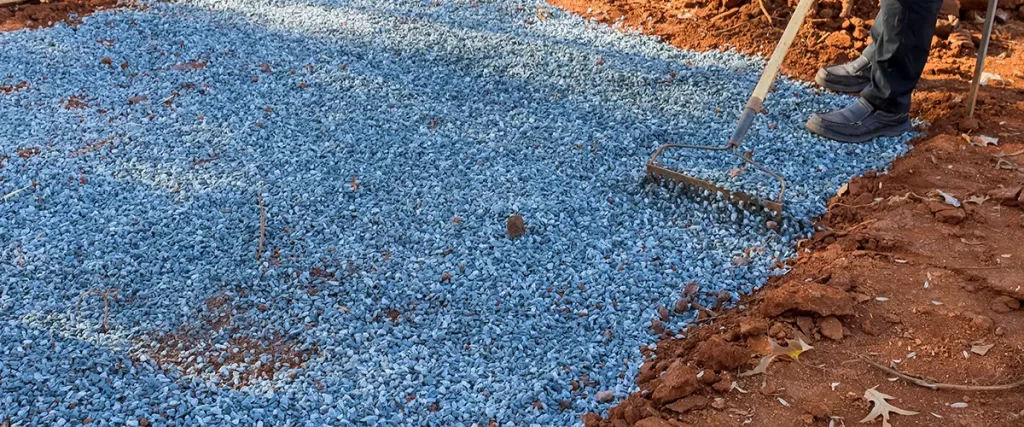
Level the Ground
For a sturdy deck, the ground needs to be level. If the area is sloped, you’ll need to either dig down the higher side or build up the lower side with packed soil or gravel. Use a long board and a level to check if the ground is even. If you’re using concrete footings or deck blocks, make sure each spot where they’ll go is leveled properly before moving on to the next step.
A common mistake is eyeballing the ground instead of actually measuring it. Even a slight slope can cause issues, so take the time to do it right.
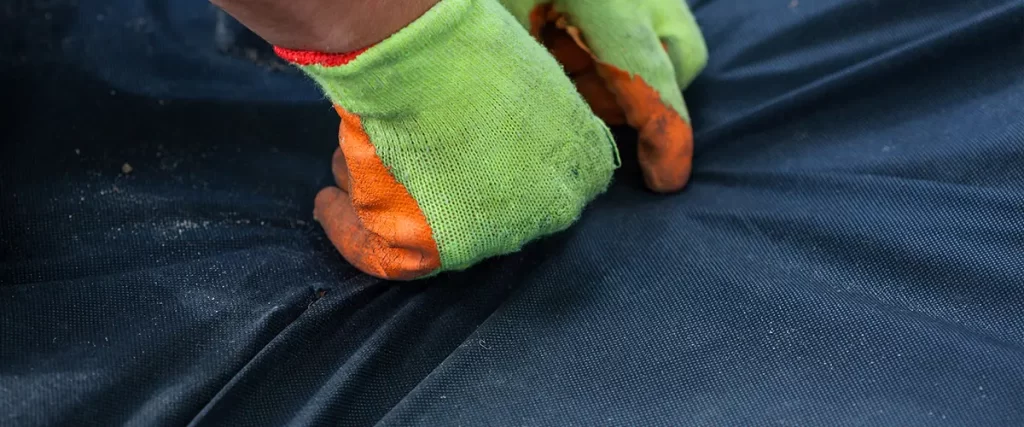
Lay a Weed Barrier
Once the ground is level, consider laying a weed barrier to prevent grass and weeds from growing underneath your deck. A heavy-duty landscape fabric works great for this. Simply roll it out over the area and secure it with stakes or rocks. This step isn’t required, but it will save you from dealing with weeds growing through the gaps in your deck boards later.
Some people also choose to add a layer of gravel over the weed barrier to improve drainage and prevent mud from forming underneath the deck.
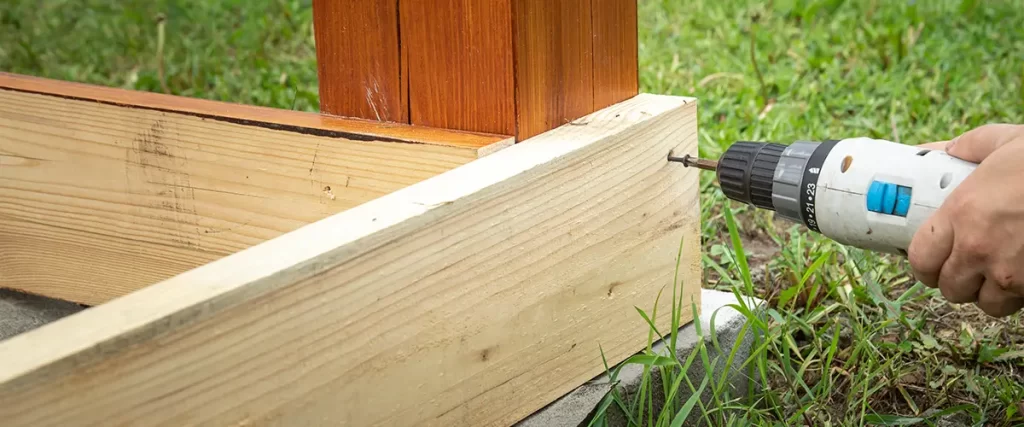
Choose Your Deck Foundation
There are a few ways to support a deck, depending on the size and weight of your build. The most common foundation options include:
- Concrete Footings – These are dug deep into the ground and filled with concrete. They provide the strongest support, especially for larger decks.
- Deck Blocks – These are pre-made concrete blocks that sit on the ground and support the deck posts. They’re great for floating decks and don’t require digging.
- Gravel Base – If you’re building a simple ground-level deck, you can use a compacted gravel base to provide stability and drainage.
No matter which foundation you choose, make sure it’s spaced correctly according to your deck’s design and weight load.
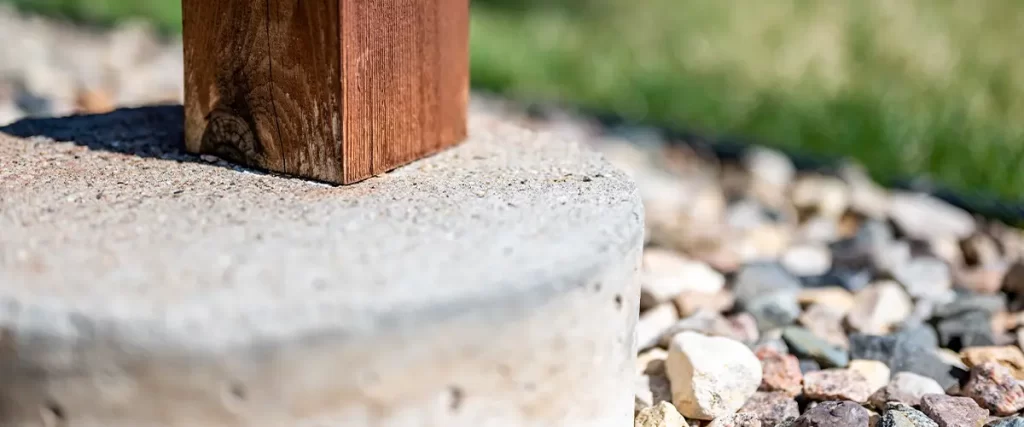
Install Footings or Blocks
For concrete footings, dig holes based on your local frost depth to prevent shifting in cold weather. Typically, holes should be at least 12 inches deep but may need to go deeper depending on your area. Pour concrete into the holes, place a post anchor, and let it cure before attaching your deck posts.
If using deck blocks, place them on level ground according to your layout. You can add a layer of compacted gravel underneath them for extra stability. Make sure each block is positioned evenly to avoid an unsteady deck.
Compact the Soil
Before moving forward, compact the soil in the deck area. Loose soil can shift over time, causing your deck to become uneven. You can use a hand tamper or a plate compactor to press down the soil. If you’ve added gravel, make sure it’s packed tightly as well.
Double-Check for Level and Square
Now that your ground is prepped and footings or blocks are in place, take one last check to make sure everything is level and square. Adjust as needed before moving on to framing and building your deck. A little extra time spent here will ensure your deck is strong, even, and built to last.
FAQ: Preparing the Ground for a Deck
1. Do I need to remove all grass before building a deck?
Yes, it’s best to remove grass and any plants from the deck area to prevent weeds from growing underneath.
2. How deep should deck footings be?
This depends on your location, but typically footings should be at least 12 inches deep. In colder areas, you may need to dig below the frost line.
3. Can I build a deck directly on the ground?
Yes, but it’s best to use a gravel base to help with drainage and prevent wood from sitting in moisture.
4. What’s the easiest way to level the ground for a deck?
Use a long board and a level to check for evenness. If needed, remove high spots and fill in low areas with compacted soil or gravel.
5. Is a weed barrier necessary?
It’s not required, but it helps prevent weeds from growing between deck boards, making maintenance easier.
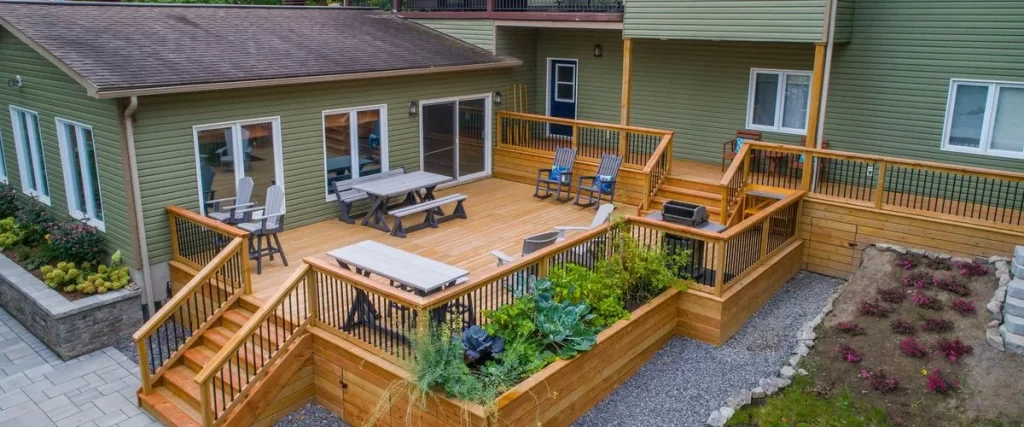
Upgrade Your Deck With Riverview Decks
Preparing the ground is one of the most important steps in building a deck. A strong, level foundation ensures your deck stays safe, sturdy, and beautiful for years. From clearing the area to setting the right foundation, every step matters in creating a space that’s built to last.
If you want a deck that’s professionally built with a solid foundation, Riverview Decks is here to help. Our team specializes in high-quality deck construction, ensuring every part of the process—from ground preparation to the final build—is done right.
Give us a call today at (865) 801-4545 and let’s build the perfect deck for your home in Knoxville, TN!

